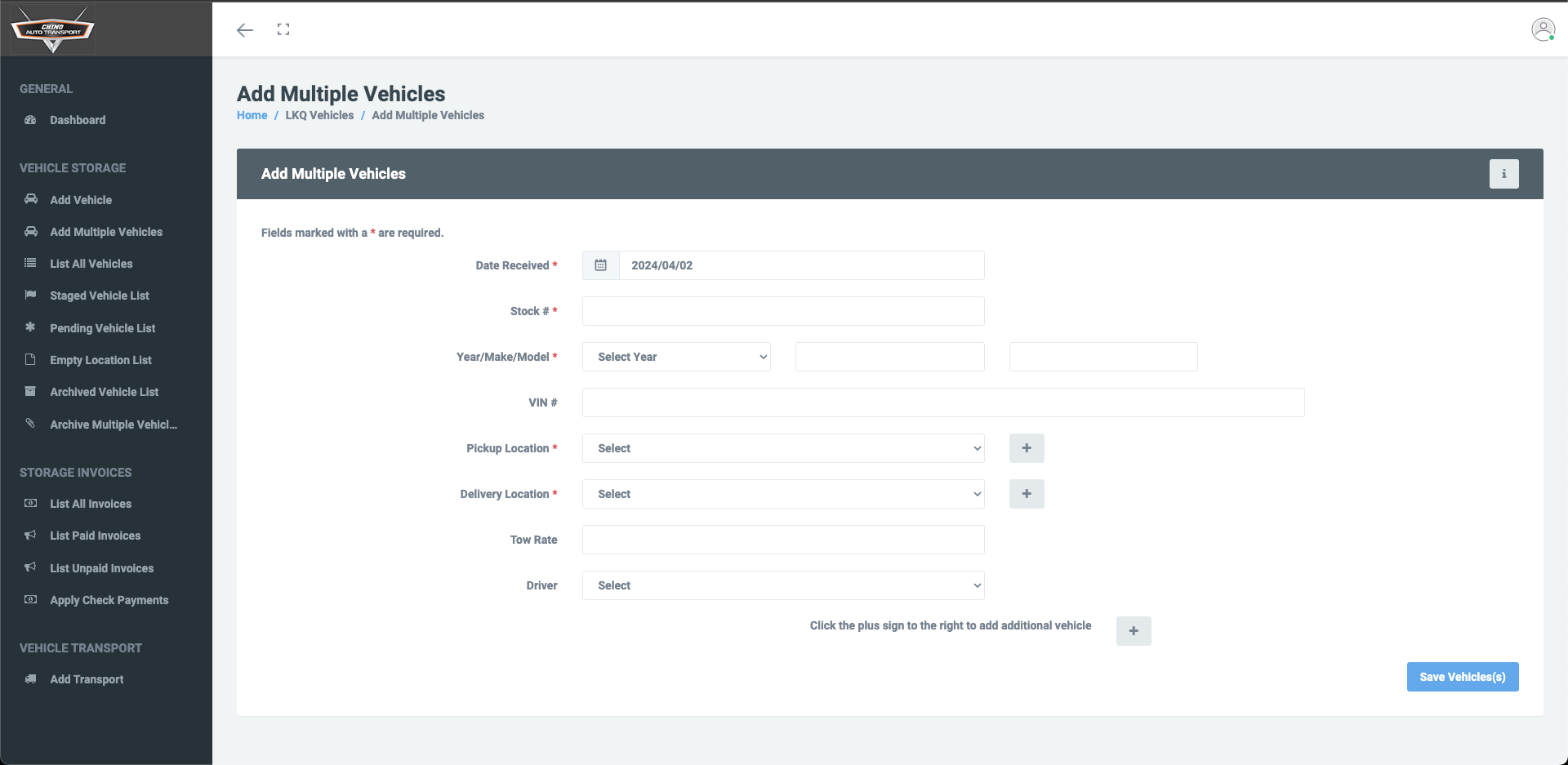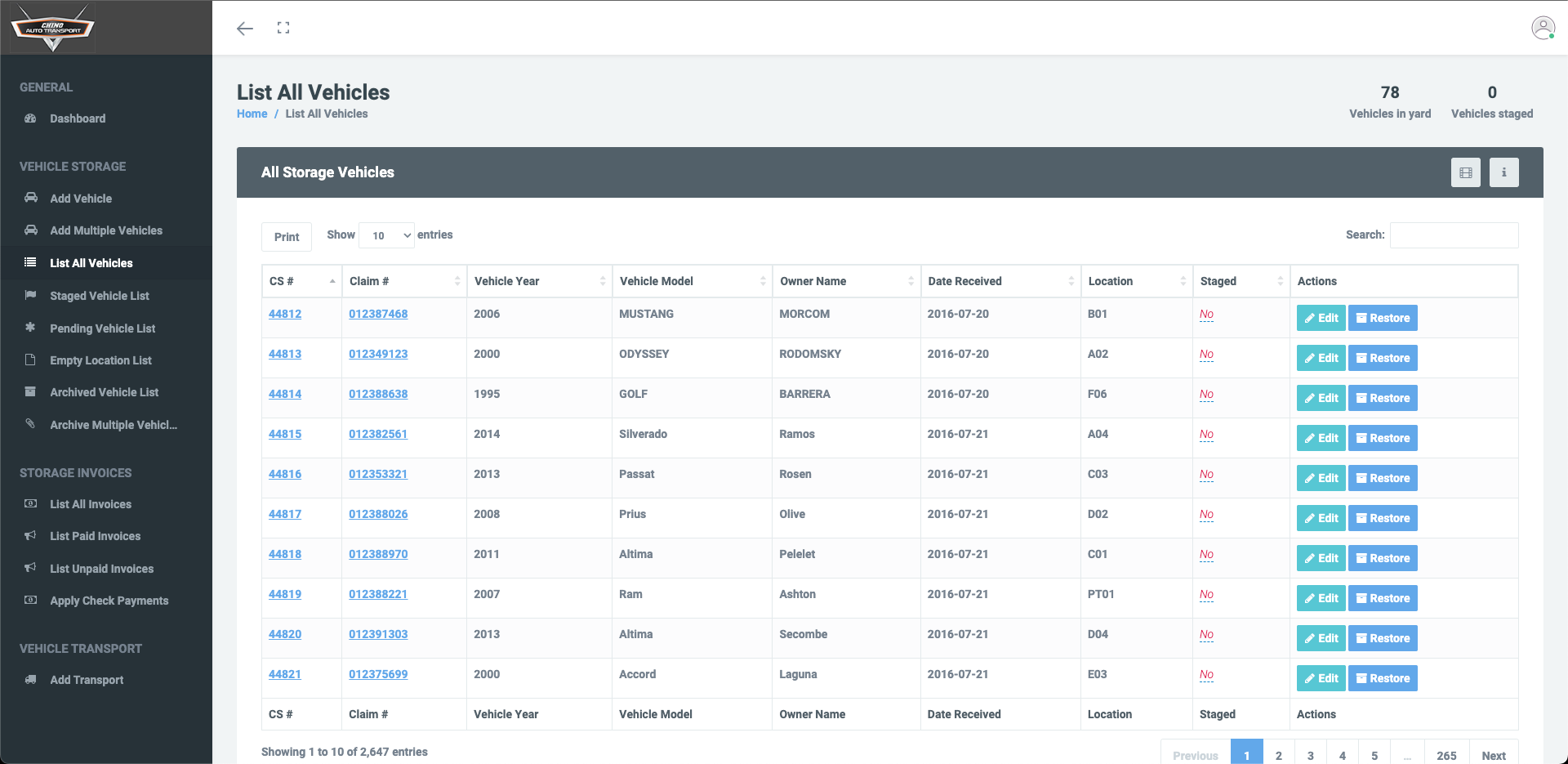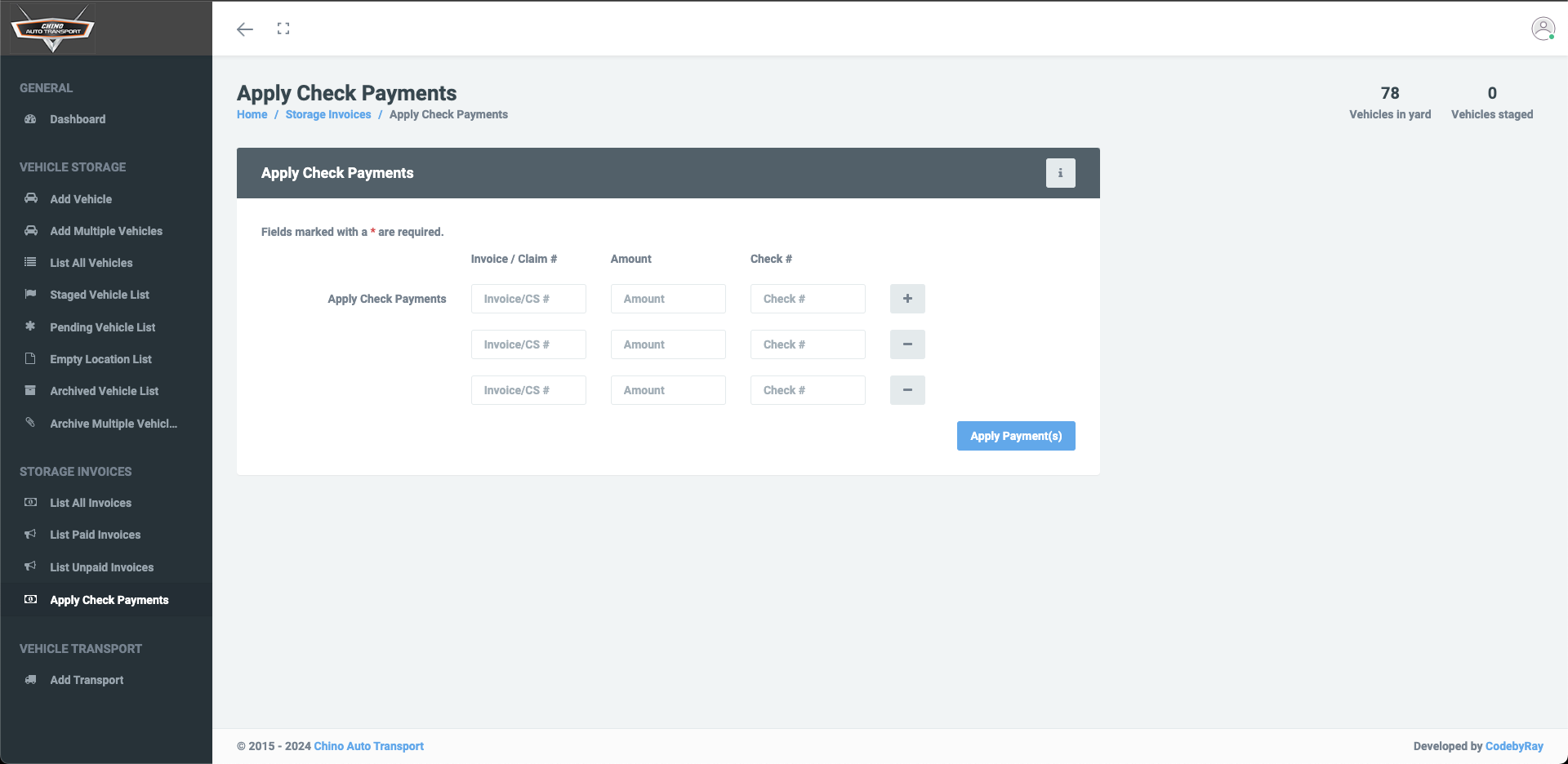Case Study: Chino Auto Billing Platform
Tech Stack: Laravel, Livewire, PHP, MySQL, HTML, Bootstrap CSS & Javascript
Introduction
A leading auto towing and transport company previously relied on a manual process for their billing system, which involved generating invoices using Excel, manually creating emails, attaching the relevant documents, and sending them to their clients. This labor-intensive method was not only time-consuming but also prone to errors, leading to delays and inconsistencies in client communication. Recognizing the inefficiencies and the need to enhance client satisfaction, the company embarked on a transformative journey to develop a sophisticated billing system. The new system was designed to automate the conversion of uploaded files to PDF, combine them with the generated PDF invoice, and email the complete set of documents to clients without manual intervention. This case study delves into the development process, challenges overcome, and the innovative solutions adopted, leveraging a tech stack that includes Laravel, PHP, MySQL, HTML, Bootstrap CSS, and JavaScript.



The project aimed to overhaul the company's billing process by automating the generation of invoices and the email dispatch system, ensuring timely and accurate billing. By moving away from manual processes to a sophisticated automated system, the company sought to enhance operational efficiency and improve client satisfaction.
- Laravel & PHP: Provided the foundation for the backend framework and server-side logic, offering a scalable and robust solution for handling complex billing operations.
- MySQL: Served as the database management system, storing all transactional data, client information, and invoice records securely.
- HTML & Bootstrap CSS: Utilized for designing the user interface of the billing system, ensuring it was responsive and user-friendly.
- JavaScript: Added dynamic functionality to the web interface, enhancing user interaction and system usability.
Development Process
Challenges and Solutions
- Automating File Conversion and Merging: The automation of converting various file types to PDF and merging them with invoices required integrating reliable PDF conversion and merging libraries that were compatible with Laravel.
- Ensuring Email Deliverability: To guarantee the reliable delivery of emails with attachments, the system was configured to use a reputable SMTP service, and Laravel's email queueing feature was optimized to handle bulk email dispatches.
- Data Security: Implementing robust security measures was paramount due to the handling of sensitive client information and financial data. Laravel's security features were utilized to the fullest, including encrypted data storage and secure authentication methods.
Results and Impact
- Operational Efficiency: The automation of invoice generation and email dispatch significantly reduced manual labor, errors, and processing times.
- Improved Client Satisfaction: Clients benefited from receiving accurate, timely, and professionally presented billing documents, enhancing the company's reputation and client relations.
- Scalability and Reliability: The system's scalable architecture and reliable performance paved the way for future enhancements, including the integration of additional services and expansion into new markets.